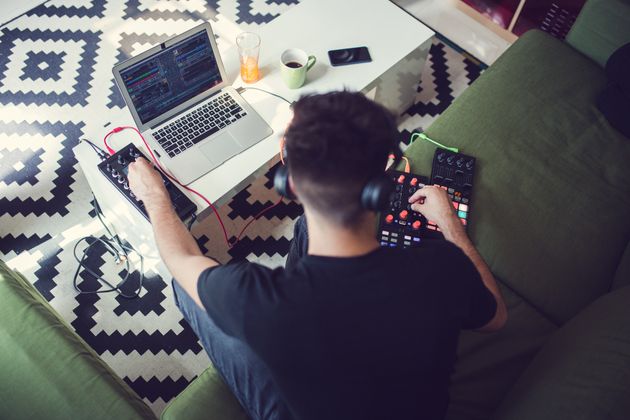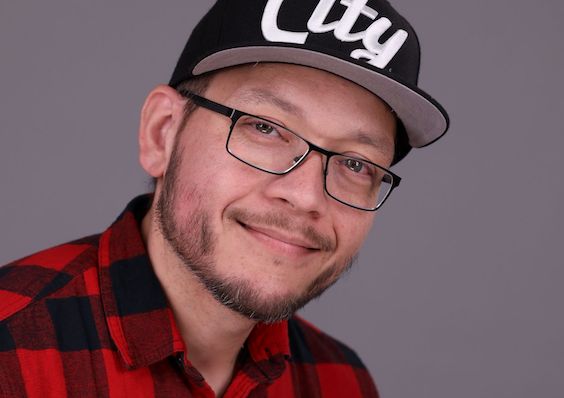
Many of us have spent much of the past year working from home, virtually meeting with colleagues and making presentations to clients while trying to kick a pile of dirty washing away from view. Our social lives have also been conducted indoors, from online quiz nights to musical gigs. The most sought-after item for an evening of relaxation or fun this past year? A reliable broadband connection.
DJs and musicians have continued performing virtually throughout the pandemic, whether playing impromptu songs from their bedrooms or heading to empty studios and venues to perform. Yet through digital performances, they touched individuals in their own cities and across the world, gaining legions of new fans and providing solace in a time of uncertainty.
The pandemic has accelerated our reliance on technology and reliable broadband, to enable us to do what we love and stay connected even when miles apart. Virtual gigs have also showcased a new way for performers to be more inclusive, to reach a broader audience, to experiment creatively and to do so in an eco-friendly manner.
We chatted (virtually via super reliable Sky Broadband Superfast, of course) to DJs and musicians about what it’s really been like to play virtual gigs: the lessons learned, the essential kit, the struggles of connecting to an audience that wasn’t in the same room.
One thing’s for certain: we’ve never relied on the comfort of music more in our lives.

DJ Kue: “You Realise How Important Your Internet Connection Needs To Be When Live Streaming”
San Francisco-based DJ, producer and remixer Michael Morales, aka DJ Kue, started live streaming online during the pandemic for his mental health: creating some normalcy through a live streaming schedule helped create a sense of calm and stability in all of the uncertainty of the pandemic.
There were many changes for DJ Kue to grapple with, from not sharing the physical space with his audience, to having to respond to messages from fans in a virtual chat box while performing. But having a reliable broadband set up helped with peace of mind that the livestream would go smoothly.
“As a DJ, you also need to be your own technical support when something goes wrong. And believe me, it does tend to go wrong at times,” he says. DJ Kue experimented with a range of different tools and services before deciding that OBS (open broadcaster software) and streaming to Twitch worked best.
“For myself, having good internet was the most important thing. There are a ton of ways to livestream though and the internet is definitely your friend if you want to learn how to do it,” he says.
Connecting with an audience that wasn’t there was another challenge: some listeners wanted to socialise, engaging with DJ Kue through online chats, while others treated virtual livestreams as pleasant background music to their afternoons or evenings. Many who would struggle to get to clubs in pre-pandemic times (e.g. those with young children), tuned in for a much-needed jam session in their day.
“I feel like DJs livestreaming have given them the opportunity to experience something similar (although virtual), and even though it’s not entirely the same, people still have fun,” he says.
On a personal level, the last year has also been a period of creative growth and experimentation for DJ Kue, who’s revisited old music and even played around with his virtual livestream setups.
“I love the creative aspect of live streaming because you can do it anywhere: the most fun one I’ve had recently is where I had set up in front of my coffee nook at home for a morning coffee DJ stream and ended up making coffee while playing house music and interacting with folks in the chat. It was such a blast.” The beauty of a setup with reliable broadband allows creators like DJ Kue to work their magic from anywhere – to fans everywhere.

Emily Burns: “I Love Doing The Live Performances Virtually – It’s Something I will Definitely Continue. I Have Really Enjoyed It”
Singer and songwriter Emily Burns is a musician who pivoted to livestreams last year, jumping on her Instagram Live nightly, then weekly, for 10-15 minutes to perform a song or two and engage in conversation with her fan base. As someone who was desperately missing live performances, this was as much for her as it was for her audience, and gave her the joy of playing live – even without anyone else in the room.
With a reliable broadband connection she didn’t need to upgrade her setup at home, although she did one charity “show” from her bedroom which featured a new mic and lights that changed in time to the music – an upgrade courtesy of Burns’ roommate, an engineer at Abbey Road Studios.
For Burns, reaching a new audience brought unexpected joy during the pandemic.
“I noticed people were joining my live streams and commenting, saying, ‘I’m from Korea’, and all these other places. Ordinarily, these people wouldn’t be able to necessarily come to one of my shows, so that was definitely an upside to it, being able to engage with people around the world,” she says.
Burns also found she could provide support to fans beyond the music, using her home technology setup to organise chats about mental health with her fans, in a series known as “Terrified Talks,” inspired by her single “Terrified.” A reliable broadband connection made these virtual conversations possible, allowing her to see a more intimate side to her fan base, and candidly discussing issues beyond the music – something that would never happen in a live show.
“It always amazed me how candidly and openly people would talk about their own situations. So that’s something that I definitely take away as a huge, huge positive of the last year.” Burns plans to continue her virtual streaming as she prepares for her next adventure: her live UK tour is kicking off in September 2021.

Black Country, New Road: “That Was Weirdly One Of The Best Gigs We’ve Ever Played And It Was A Live Stream”
How does a band with seven members who are scattered across London stay connected? For Lewis Evans, Tyler Hyde, Isaac Wood, Georgia Ellery, May Kershaw, Charlie Wayne and Luke Mark, the musicians comprising experimental rock group Black Country, New Road, in the beginning, the transition from live to virtual gigs felt like a healthy break from the intensity of performing in real life.
Getting together as a band to rehearse and perform together – even virtually – was a slow process (made possible by reliable broadband and certain bandmates living together), but one that gave the band members time to focus on the creative side of things, finishing most of the demo for their second album and discovering older and newer passions: saxophonist Lewis Evans bought a tenor saxophone to get back to his jazz roots while bassist Tyler Hyde has been writing her own music.
While most musicians performed their live streams from home, Black Country, New Road partnered with streaming platform DICE to reach new audiences and break into venues they always dreamed of, like the Queen Elizabeth Hall at the Southbank Centre.
“It was a real step up for us. We went there the day before and there was this huge team of people setting up this incredible space with five giant projectors across this beautiful venue. We had about 10 of our friends that were the choir for us but it wasn’t unveiled that they were the choir until later in the set, so it just looked like we had a small audience in there, and then they sang with us and it was just beautiful to share that with friends,” says Hyde.
Not only has embracing technology presented new opportunities for the band, but virtual gigs have allowed them to be more inclusive and kinder to the planet. “Anyone who’s anywhere can tune into one of these things, you don’t feel like you’re missing out. I certainly felt like I’ve been missing out on bands that I’ve liked, and they’ve been on tour and I couldn’t make it to a gig or their best gig that they played was somewhere in a different country and I couldn’t get there. And also, the environmental impact, and our carbon footprint as a band – that’s something we’re really trying to work on,” says Evans.
With the ability to reach an audience in any country – one of the band’s gigs over lockdown was a livestream from The Moth Club in London’s Hackney to an American university in New England – Evans and Hyde are hopeful for a future where live performances can be combined with livestreams.
“A band plays differently depending on the audience; a crowd in South America is going to be totally different to a crowd in London. We don’t have the money to go and see our favourite bands play all around the world. People that have even less money than us, can’t even go to any gigs at all – they’ll never get to see their favorite bands. So if they can pay a fiver to watch the livestream, that’s amazing,” says Hyde.
Now, wouldn’t we all love that: a world where all we need is reliable broadband – and a fiver – to see any band of our dreams. While wearing our PJs, no less.
These are just some of the amazing stories where reliable broadband has helped fuel people’s creativity over the last year. Find out how super reliable Sky Broadband Superfast could help fuel your passion.